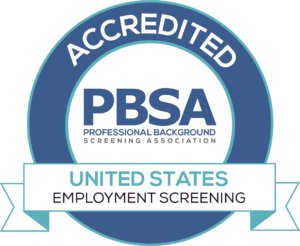Human resource professionals often wonder about the key risks of conducting superficial background screening. Read this article to learn how to avoid this?
Conducting a background check is perhaps the only way to make sure that the people you hire are best suited for their jobs. Performing a run-of-the-mill background check, however, is of very little use, since the information you dig out might be inaccurate or insufficient to confirm the veracity of the claims made by the applicants.
Having a faulty, incomplete, or superficial background screening process in place can affect the integrity of your hiring process, harm your reputation as an employer, and open you up to potential lawsuits by third parties who are affected by the actions of the people you hire.
In this article, we take a look at five mistakes you should avoid while conducting a background check on potential employees.
Mistake #1 – conducting a background check based on national and statewide data alone
Digging through national and state-specific criminal records can help you find out if an applicant has a criminal past. In some cases, however, state-specific data might not be sufficient to find out everything you need to know about an applicant. In such cases, it is essential to narrow your search and access county court public records to get the information you need about an applicant.
Mistake #2 – conducting a background check based on the applicant’s name on their resume
Now, this is not a mistake per se, but it might not give you the whole picture in many cases. For instance, if an applicant committed a crime in the past and officially changed their name later, running a background check using their current name is of no use, since their criminal records would have been filed under their old name.
Similarly, some court records might have been filed under the applicant’s maiden name, alias, or a differently spelled version of their name. So, the background check must be conducted using different versions of the applicant’s name.
Mistake #3 – Conducting the same kind of background check for all applicants
This is a big mistake, as a standardized background check might not provide you with all the relevant information you need to determine if a person is ideally suited for the position they are applying for.
This is why the parameters of the background check you conduct must be determined based on the position you are hiring for and the duties that the employee is expected to perform.

Mistake #4 – failing to access different kinds of records
Your background check must not be restricted to an applicant’s educational, employment, and criminal history alone. Other records like professional licenses and certifications, motor vehicle records, and consumer credit reports must also be checked to get a complete picture of the applicant’s past.
Mistake #5 – using unverified sources to conduct a background search
Contacting the individuals listed as references on an applicant’s resume is not enough to verify the information provided by the applicant. The educational and employment information must be verified only through authentic primary sources – the college they went to, the company they interned at, or the HR department of the previous company that they worked for.








